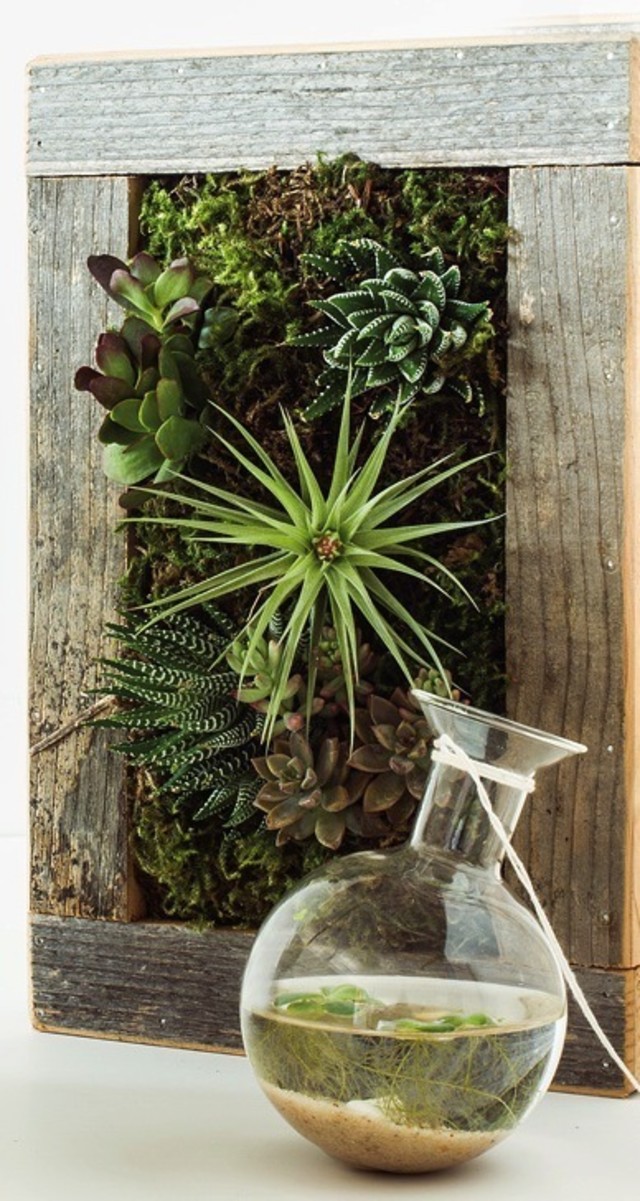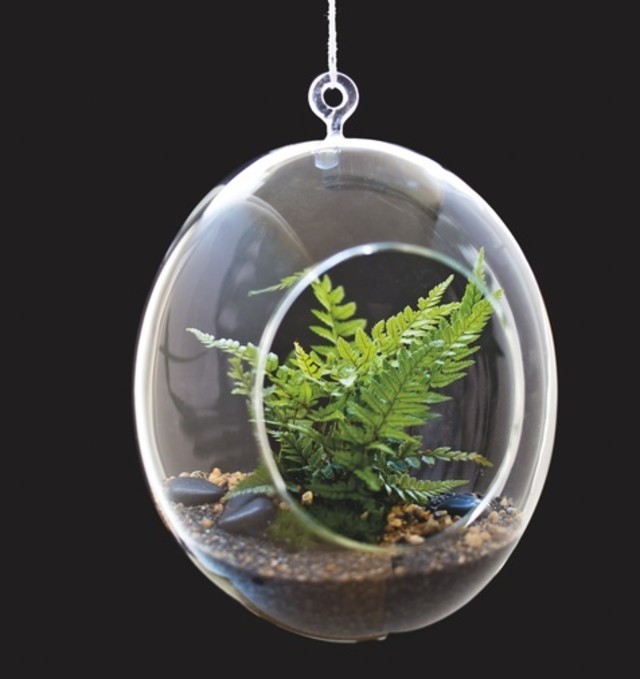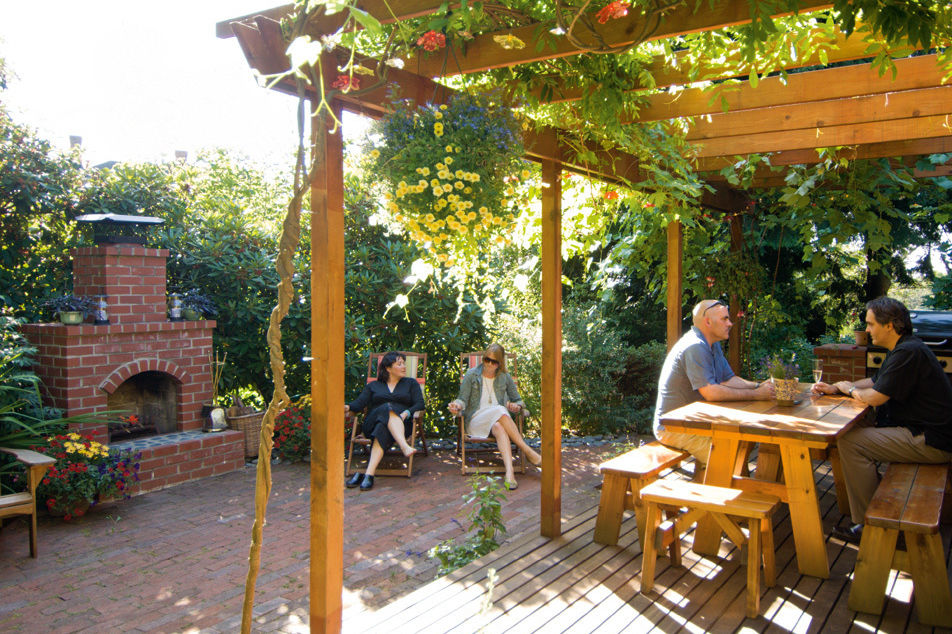The Next Generation of Houseplants and Terrariums

Vertical garden and aquatic terrarium
Image: Nomad
As any serial killer of houseplants can attest, gardening indoors has its challenges. A last-minute vacation, a pesky cold draft, or even a bit too much love can quickly lead to an unsightly, confidence-crushing demise. Even when plants live to fight another day, the struggle may involve unsightly plastic pots, humidity trays, or poky bamboo stakes.
At Southeast Portland’s Artemisia, Amy Bryant Aiello crafts whimsical solutions. Some of the most visually stunning indoor plants, it turns out, are the easiest to care for. And most thrive just as happily in fanciful, suspended vessels as they do in the grimy plastic troughs that clutter counters, tables, and floors. Limited space? Go vertical. Not much sun? Grow ferns and mosses. Here, Aiello offers three kinds of inspiration to ditch that spindly rubber tree and embrace a new, design-savvy generation of houseplants.
Vertical Garden
A handmade picture frame constructed from reclaimed wood is planted with succulents and air plants, then snuggled into a bed of moss that hides the soil and roots.
Best Spot: Hang on a wall, as you would any framed artwork, where the detail and texture can be appreciated up close and from a distance. Brightest light is needed in winter for succulents, although they can burn if too close to a window in hot summer sun.
Care Tips: Every three to four weeks, take the frame down, pour water directly on the center of each succulent, and let it soak in. (In summer, add a weak solution of liquid fertilizer to the water.) Every two weeks, pluck off the air plants and soak them in water for an hour, shake off, and nestle back into the frame.
Aquatic Terrarium
Water and sand provide eye-catching sparkle in a clear, reflective vase suspended by a string, with tiny floating water lettuce plants inside.
Best Spot: This miniature water garden thrives with diffused light and typical household temperatures. Optimize its reflective quality by suspending it near a window—ideally, protected by a curtain in summer to block the hot south or west sun. For dramatic effect, try clustering several together.

Japanese Mossball
Image: Nomad
Care Tips: Every two weeks, pour out half the water and add a fresh batch to keep algae down. If any leaves turn yellow, add a drop of liquid fertilizer to the water.
Japanese Mossball
Also known as kokedama, Japanese mossballs are created by packing plants’ roots within a ball of special clay soil, then wrapping it with preserved moss and binding it with water-impervious string.
Best Spot: A mossball planted with a silver sword philodendron (pictured here) thrives anywhere in medium-to-bright indirect light.
Care Tips: Once a week, let the mossball sit in a dish of water for 10 to 15 minutes. Squeeze out some moisture before repositioning.

Image: Nomad
Ovular Hanging Terrarium
A delicate rabbit’s foot fern creates a dramatic tableau in miniature, planted in a bed of mood moss atop potting soil and black sand, with a mixture of Monterey pebbles and blue Thai river pebbles strewn atop.
Best Spot: Hang in north- or east-facing windows with moderate to light shade. Avoid bright afternoon light, which will scorch your fragile fern.
Care Tips: About once a week, slowly pour up to ¼ cup water over the surface area and allow to seep into the roots.




